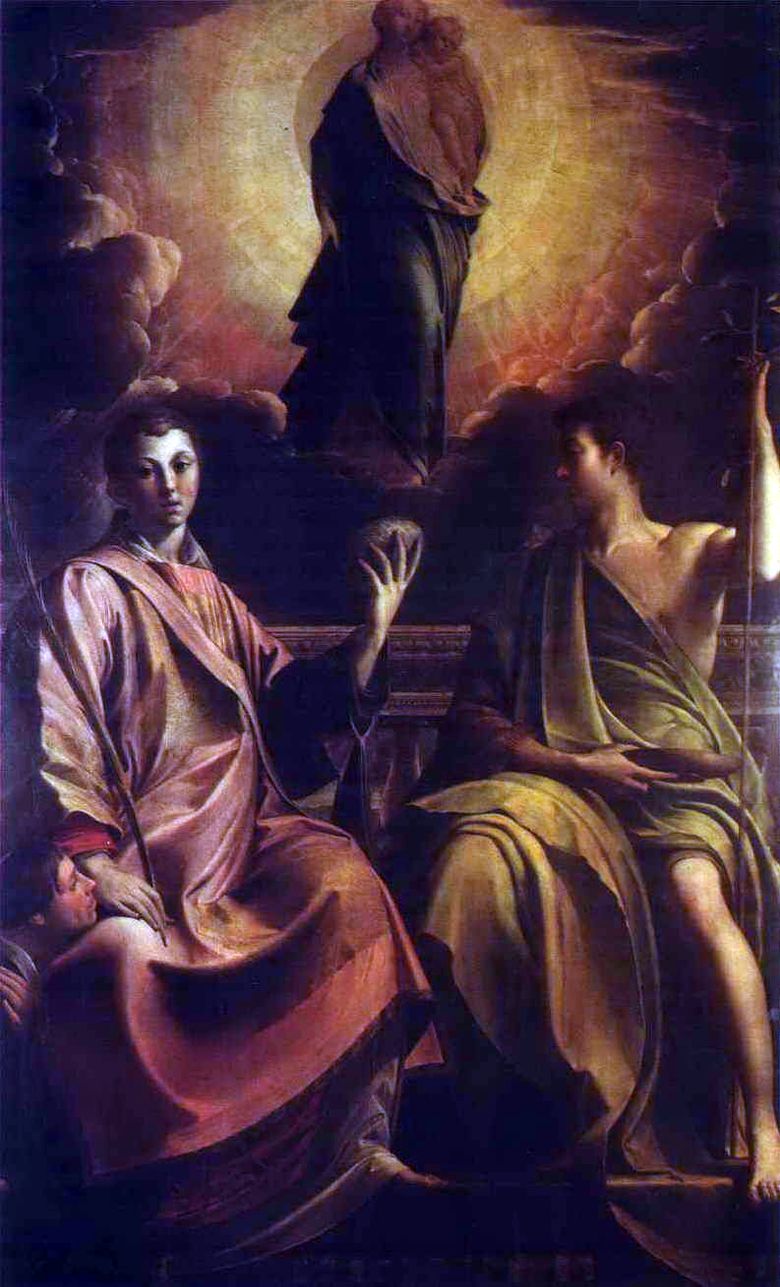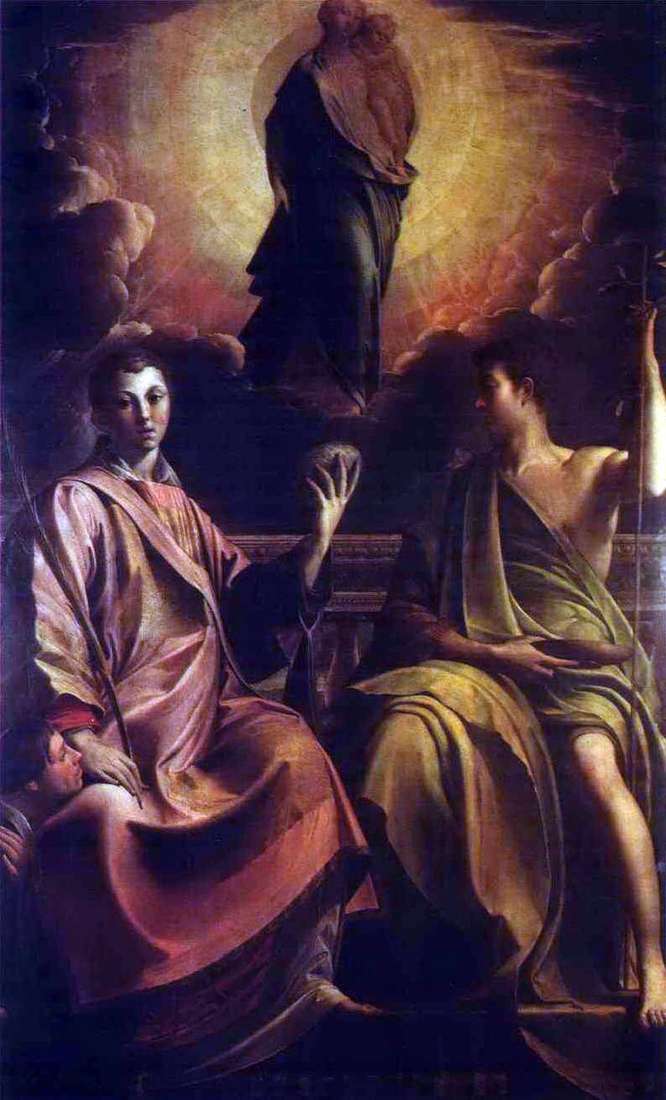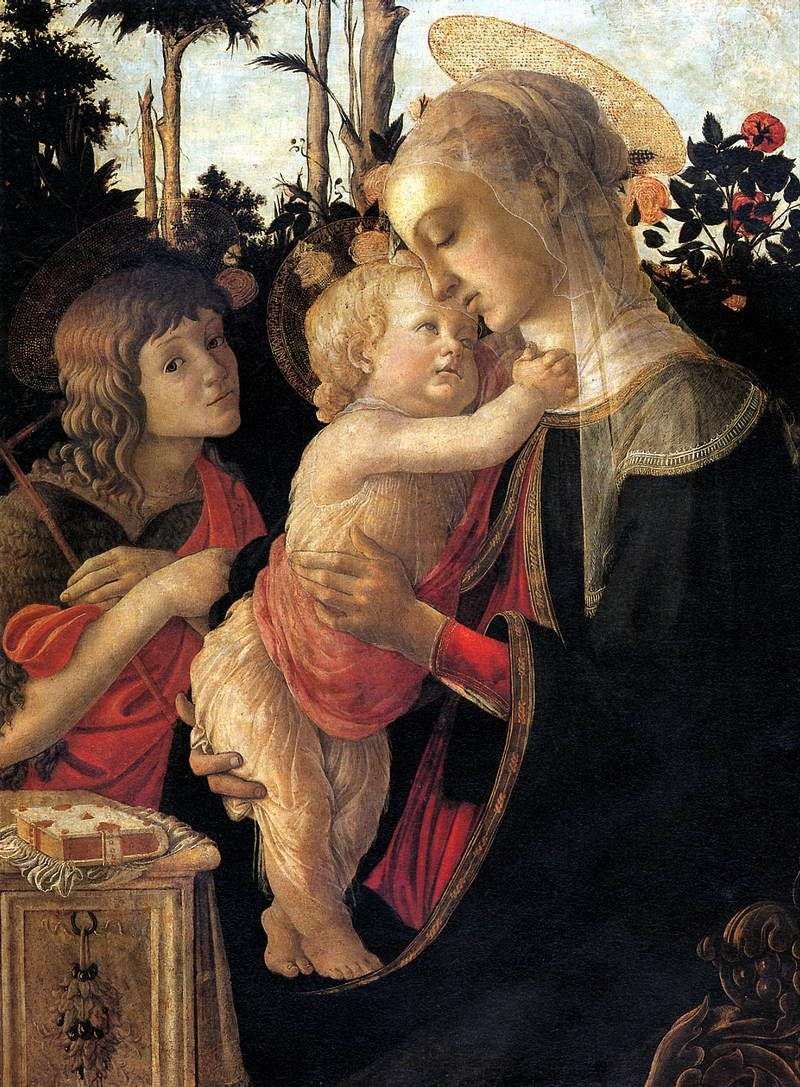
Parmigianino’s painting “Madonna, St. Stephen and John the Baptist”, wood, oil. The development of an engraving of the Maneristic circle, in the development of which Parmigianino played an important role, also determine the fascination with purely decorative pictorial effects. His name is closely related to the development in Italy of the 16th century of two new types of engraving – etching and color woodcut engraving, which attracted the mannerists with ample opportunities for pictorial and decorative solutions. Parmigianino was one of the first masters of etching, which later became widespread in Europe.
In the few etchings of the Italian artist, such as The Standing in the Coffin, The Adoration of the Magi, Tais, and others, the specifics of the etching, its uneven, intermittent stroke are subordinate to the desire to convey the bizarre, mysterious play of light and shadow, to inform the entire picture of fluctuation and weightlessness. The emergence of colored woodcuts, which won particularly widespread recognition in the circle of the manorist, was originally associated with Venice, where pictorial trends appeared in the engraving in the first decade of the 16th century.
Hugo da Carpi, the inventor of the colorful woodcut, the so-called “kyaroskuro”, worked in Venice for a number of years and received a patent for his invention from the Venetian Senate in 1516. Introducing printing from several boards and replacing the linear pattern with a blot, Hugo da Carpi announced the engravings of the picturesqueness of the free, broad brush pattern. However, although the quest of Hugo da Carpi is in many ways close to the creative aspirations of the masters of Venice, he has a one-sided nature for painting and is subordinated to the search for decorative effects. This is already evident in the engravings from Raphael cardboards for tapestries, executed shortly after Hugo da Carpi moved to Rome, and to an even greater extent characterizes his later sheets, made according to Parmigianino drawings, for example, “Diogenes”.
The further development of the art of kyaroskuro was greatly influenced by Parmigianino, whose drawings served as the main material for reproduction until the end of the 16th century. The last years of his life the master almost never did painting, his painting “Madonna, St. Stephen and John the Baptist” are only an attempt to return to the world of big art, but rather just a need to earn some money.
Alchemy not only distracted the artist from his main vocation, but also caused the premature death. Constant “communication” with mercury, continuous inhalation of its vapors brought the painter to fever and diarrhea, and it burned down in just a few days. Parmigianino was buried, as he had bequeathed, completely naked, with an archpastoral cypress cross on his chest, in the church of the Servite brothers not far from Parma and Casalmaggiore.
 Madonna, St. Stephen et John the Baptist – Francesco Parmigianino
Madonna, St. Stephen et John the Baptist – Francesco Parmigianino Madonna on the throne, Zechariah, John the Baptist and Mary Magdalene by Francesco Parmigianino
Madonna on the throne, Zechariah, John the Baptist and Mary Magdalene by Francesco Parmigianino Madonna en el trono, Zechariah, John the Baptist y Mary Magdalene – Francesco Parmigianino
Madonna en el trono, Zechariah, John the Baptist y Mary Magdalene – Francesco Parmigianino Madonna with St. Margaret and other saints by Francesco Parmigianino
Madonna with St. Margaret and other saints by Francesco Parmigianino Madonna, San Esteban y Juan el Bautista – Francesco Parmigianino
Madonna, San Esteban y Juan el Bautista – Francesco Parmigianino Madonna with a rose by Francesco Parmigianino
Madonna with a rose by Francesco Parmigianino Madonna and Child, Angels and St. Jerome by Francesco Parmigianino
Madonna and Child, Angels and St. Jerome by Francesco Parmigianino Madonna with the Child and John the Baptist by Sandro Botticelli
Madonna with the Child and John the Baptist by Sandro Botticelli